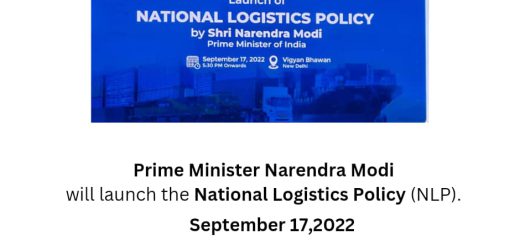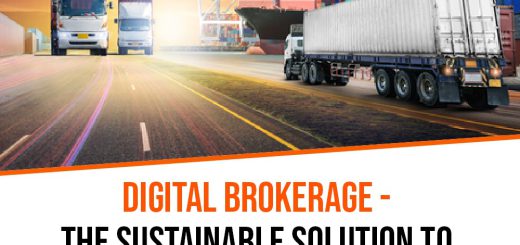How to Improve Urban Freight Transportation?
Deliveries and urban freight trucks account for 30% of traffic jams in today’s cities. As city populations grow and online shopping increases, so does the demand for urban goods systems. Custom software for urban goods is critical for managing this complexity and effectively integrating transport systems.
The percentage of traffic jams caused by different kinds of vehicles
Companies are responding to the challenge with novel solutions. SOLFI is at the forefront of improving urban logistics through sustainable methods and smart networks. However, these technical advancements are critical. They improve the efficiency and environmental impact of city transport systems.
This process fosters city commerce and shapes residents’ daily lives. It is part of a larger goal of creating smart cities through careful transportation planning.
The mutually beneficial relationship between city logistics and urban development necessitates a forward-thinking approach that incorporates sustainable urban freight models to shape the future of smart cities.
The success of urban freight transport depends on a thorough understanding of city dynamics. Therefore, the goal is to move goods efficiently, promote sustainability, and fully utilize smart city infrastructure.
Integrating logistics solutions to advance urban development.
- Combining city logistics and passenger transport to maximize road utilization.
- To reduce environmental impact, we prioritize sustainable urban freight.
- Addressing the last-mile puzzle in transportation planning frameworks.
- Promoting smart cities by implementing advanced urban goods transport strategies.
Urban goods transport is more than just logistics; it is critical to creating sustainable, livable cities. Also, we can maximize the potential of smart cities by coordinating transport planning with an emphasis on efficiency and the environment.
Challenges in Urban Freight Transportation
Urban goods transport is fraught with complexities. The demand for quick delivery competes with urban constraints. A broad approach is required for urban mobility’s future.
- Core aspects of urban freight transport challenges.
- Addressing Congestion and Sustainability Issues
- Congestion slows urban freight and degrades the environment. It causes trucks to take longer and use more fuel, resulting in higher emissions. We need long-term solutions to reduce traffic congestion and improve goods flow.
Navigating the Last Mile Delivery Challenges
Last-mile delivery is complicated and expensive. It necessitates speed and flexibility. Also, tight schedules and restricted areas in the city present significant delivery challenges.
Also Read:- 4 Essential Tips for Driving a Truck at Night
Addressing the Environmental Impacts of Freight Activities
The environmental impact of goods transportation is a major concern. Transport adds to global emissions. Therefore, to ensure a greener future, we must take steps to reduce the impact of urban deliveries.
Transportation Software’s Impact on Transforming Urban Freight Services
Our digital world is transforming how we approach transportation. This transformation is due to technological solutions. They have improved traffic management and freight planning. However, urban deliveries are now more efficient and streamlined.
Transportation software is critical for making these improvements in the transportation sector. It also connects different modes of transportation. Therefore, this contributes to smart urban freight policies aimed at sustainability and improved traffic flow.
Improving Freight Planning and Traffic Management With Software
Transportation software dramatically improves freight planning and traffic management. It gathers information on traffic, delivery times, and routes. Therefore. it helps to avoid potential issues and keeps logistics and transportation running smoothly.
Sustainable urban freight is critical for modern cities, allowing them to function smoothly every day. However, as populations grow, these logistics systems face significant challenges. Streets are becoming increasingly congested with personal and delivery vehicles, making it critical to integrate their flows to keep cities running smoothly.
With the rise of e-commerce, there is a need for dependable last-mile delivery. This has resulted in innovative research and projects. Therefore, these initiatives seek to improve the involvement of people and products within city infrastructure.
Using Technological Solutions to Reduce Environmental Impact.
Technological solutions also help to understand the negative environmental effects of urban freight. Transportation software encourages greener vehicles, which is necessary for effective fleet management, a primary goal of urban freight policy.
- Route optimization reduces the distance traveled, resulting in lower emissions.
- Load optimization: Ensures that deliveries are done efficiently, making the most of each trip.
- Vehicle Analytics: Tracks how vehicles perform to keep the fleet environmentally friendly.
Cities use these tools to achieve sustainability while remaining responsive to their pressing needs. Therefore, this balance of efficiency and environmental stewardship will shape the future of logistics and transportation.
Conclusion
Urban areas are constantly changing, which means urban freight transport must evolve for the better. Therefore, the advancement of online shopping necessitates significant changes. We need to keep up with customer expectations and make logistics more sustainable. However, custom software is driving this transformation. It improves logistics and promotes sustainable last-mile delivery.
City delivery relies heavily on custom software. Therefore, it aims to be environmentally friendly. However, this approach ensures that each delivery contributes to a green network. Thus cities grow, custom logistics software becomes increasingly important. It allows us to adapt and remain strong in a changing world.




Recent Comments